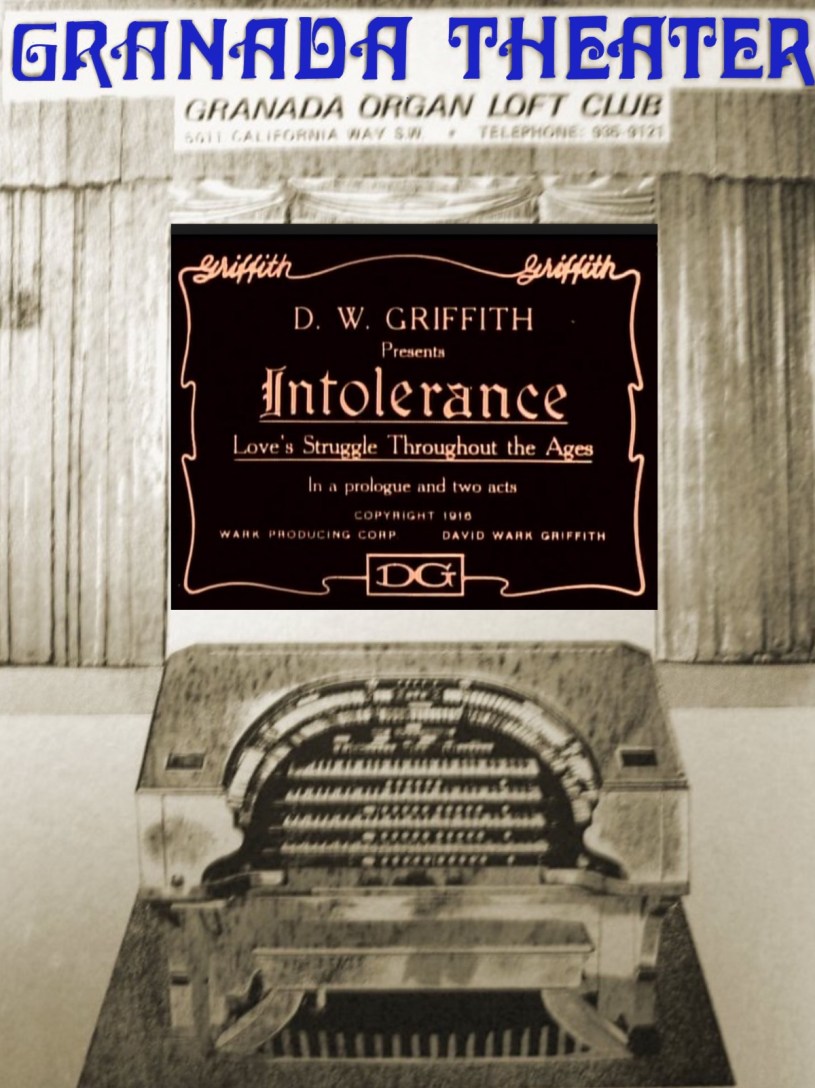
I don’t know how I heard about it. It was probably a movie ad in the newspaper, perhaps brought to my attention by my dad, who regularly perused that section of the paper. He needed to keep abreast of what was playing elsewhere, and more importantly checking up on the ads for the Cinema 1 and II in Renton. Having the show times correct was always a major concern, right under whether or not the right films were listed.
There was a theater in West Seattle that was running silent films (it was actually an organ society that rented this old theater from the owner John Danz of Sterling Theaters). It was located on California Avenue in West Seattle. On their schedule for an upcoming weekend was D. W. Griffith’s epic film “Intolerance.” And I had been wanting to see it ever since I read about it in Kevin Brownlow’s The Parade’s Gone By (see my post The Parade’s Gone by the Stationery Store). So, here was my chance.
It was far afield from our familiar stomping grounds that encompassed only Renton, Tukwila, Bellevue and Seattle, and points in between. But not outside of that circle. West Seattle was like an island separated off from the rest of the area. So my girl friend and I took an exit from I-5 north and crossed the low area above Boeing field and below the Port of Seattle. West Seattle was some high ground on the other side. And California Avenue followed the ridgeline of that high ground.
On the posters out front of the theater, the name of the organist loomed bigger than most of the other credits. That made sense once we were in and seated. The organ down in front was a monster – a Wurlitzer to be precise – or a 4 / 32 Wurlitzer to be absolutely precise. It looked as complicated as a control console in a space capsule. A small staircase of four keyboards was surrounded by a rainbow of switches. And that just kept the organist’s fingers busy. Below there was plenty to keep his feet dancing. (My organ teacher, Doris Terrill, back in Brockton, Mass would have been in heaven).
The evening led off with a mini concert on this organ, and moved smoothly into the movie itself. I watched entranced as D W Griffith wove the threads to four separate stories in four separate time lines into an exciting tapestry. No spoilers ahead. Intolerance is the theme throughout, cropping up in each story – the Babylonian/Persian section – the story of Christ and His Crucifixion – France in the 16th Century and the St Batholomew’s Day Massacre – and a modern (i.e. 1915 modern) story of a young couple torn apart by societal forces. And the organ added more than musical accompaniment, chiming in with sound effects – whistles, car horns, etc., at the appropriate cue.
And the constant reminder (a poetic touch) of the hand rocking the cradle.

